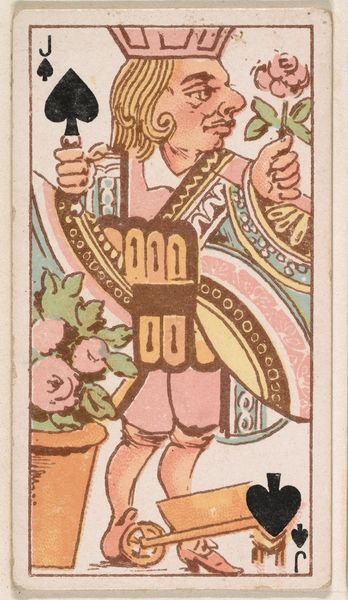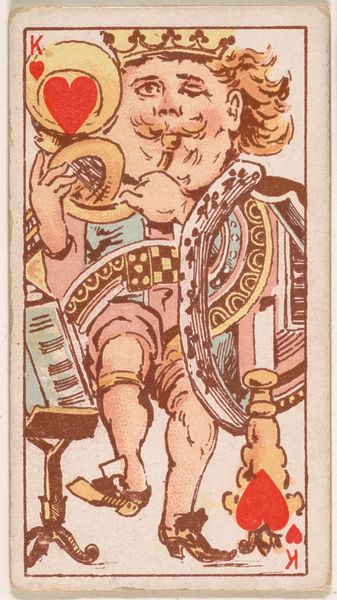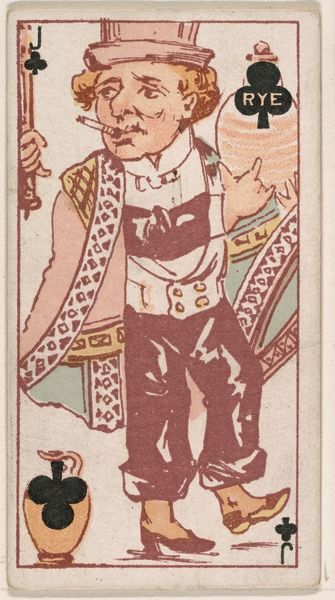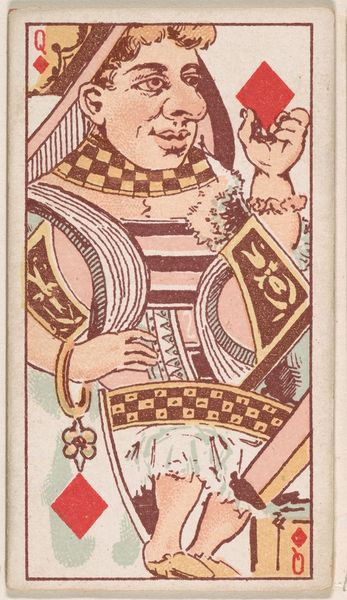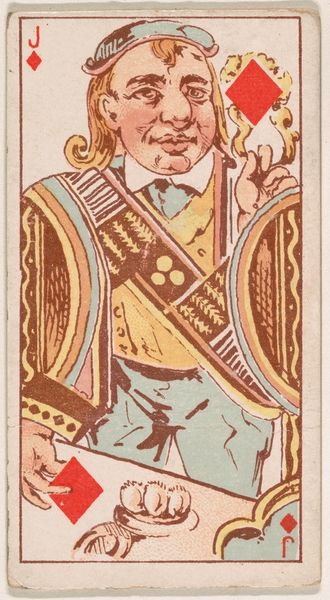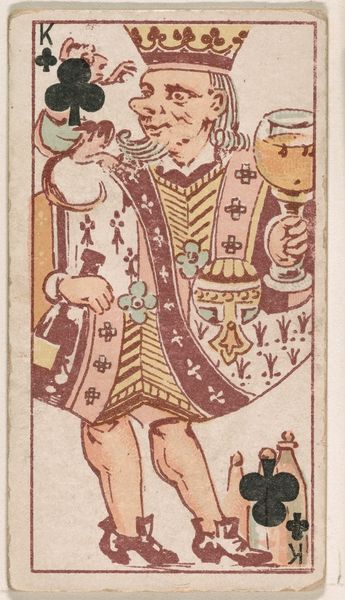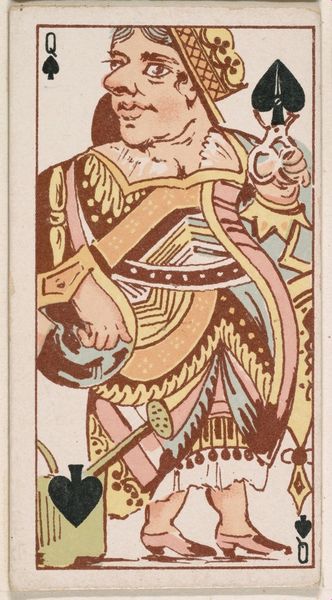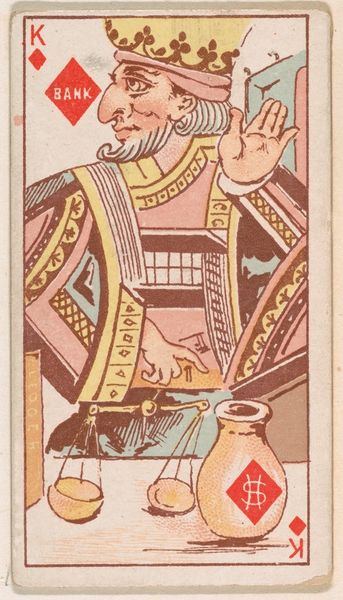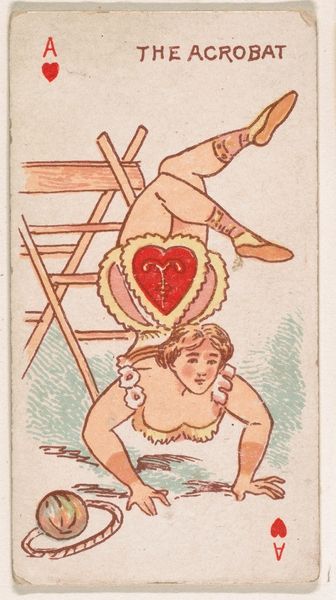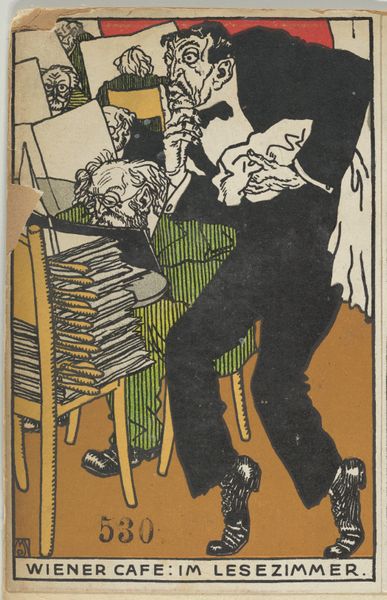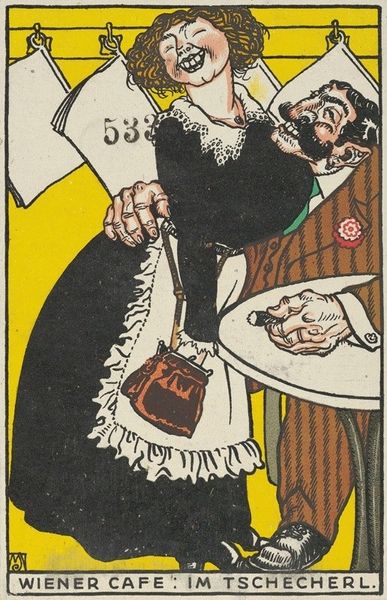
King of Spades, The German, from Harlequin Cards, 2nd Series (N220) issued by Kinney Bros. 1889
0:00
0:00
drawing, print
#
portrait
#
drawing
# print
#
caricature
#
caricature
#
genre-painting
Dimensions: Sheet: 2 3/4 × 1 1/2 in. (7 × 3.8 cm)
Copyright: Public Domain
Curator: Let’s take a look at "King of Spades, The German," a print from Kinney Bros.' Harlequin Cards series, dating back to 1889. These were inserted in packs of tobacco. Editor: It’s a bit grotesque, actually! A stumpy, somewhat comical figure sporting a crown and a pipe. Definitely a caricature. The limited color palette reinforces the playful nature, wouldn't you say? Curator: Indeed. What interests me is the mass production aspect. These weren't meant to be high art, but ephemeral objects linked to a developing consumer culture around tobacco. How did Kinney Brothers utilize print technology for promotion, and what was the impact on image dissemination in the late 19th century? Editor: Right, it's all about context. Think about the distribution networks tobacco companies established. These cards become miniature artworks that reached an enormous audience. The depiction of “The German” also says something about the era’s socio-political biases. Was this playing into, or perhaps satirizing, prevailing attitudes towards German immigrants at the time? Curator: That is definitely something to consider. Also, note the specific materials used—the paper stock, the inks, the printing techniques like chromolithography. Were these the most cost-effective choices? How did the need for mass production shape the image's design, its line work, and color choices? Editor: And did people collect these? I mean, they're pretty unique. These little cards traveled around, became part of different conversations. They ended up shaping visual culture at the time by bringing a bit of royalty in everyday tobacco consumption. Curator: Precisely. By examining the object’s materiality and the processes behind it, we gain insights into labor, commerce, and even the class structures of the time. Editor: So it’s more than just a funny little card; it’s a portal into a past social landscape. Curator: Exactly. What at first glance seems simple reveals much about the society that produced it. Editor: A small artifact packed with layers of meaning. I'll certainly look at trading cards differently from now on.
Comments
No comments
Be the first to comment and join the conversation on the ultimate creative platform.
